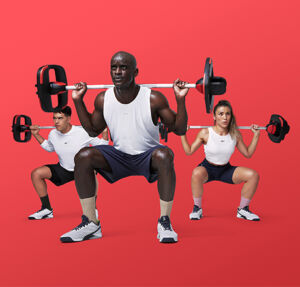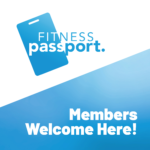SQUAT SCIENCE: HOW TO GET MAXIMUM GAIN FROM YOUR SQUATS
Engaging all the major core and leg muscles, squats are ideal for lifting overall fitness, maximizing fat burn and building strength. Now, new findings reveal the formula for getting the most from this lower body staple.
Read on and you’ll discover:
Why squats are so effective for lower body and core strength and overall fitness
New research showing the importance of depth and load
How to set up the perfect squat
Three common squat mistakes to avoid
Squat variations that will help maximize intensity

If there’s one exercise that should feature in almost everyone’s exercise routine it’s the squat. Squats are one of the most potent ways to lift overall fitness. When you squat, you’re firing up the biggest muscles in your body; the gluteus maximus (a.k.a. your butt) which is responsible for movement at the hip, plus the quadriceps and hamstrings, which work together to straighten and bend the legs. Squats also work the erector spinae, these are the long thin muscles that run up the vertebral column and are responsible for helping straighten the back. And, squats challenge your core muscles from every angle and build strength and stability – which fuels improvements across all areas of functional training.
Another great thing about squats is that anyone can do them, anywhere. A simple set of bodyweight squats can be a great way to raise your heart rate and trigger strength gains. If you want to increase the challenge, simply add weight – with a weighted barbell on your back or chest, or holding a weight plate at chest level or low in front of your hips.
New findings highlight the importance of weight selection and range when it comes to getting the maximum reward. Using the squat training techniques that feature in a typical BODYPUMP™ workout, scientists compared squat depth and the weight participants lifted while they squatted. They found the squat depth had a significant effect on the activity of the quadriceps and gluteus maximus, and the biceps femoris and lateral gastrocnemius. The weight they squatted with had a significant effect on the activity of the gluteus maximus and lateral gastrocnemius.
We asked the researchers what was more important; the depth or the load of the squat? The answer was clear, it’s the interaction between the two that is key. It is when depth and load combine that it increases muscle activation and generates the level of fatigue that sparks the desired physiological response.
So, with these fresh findings front of mind, now’s a perfect time to double-check your squat technique (so you can squat to the adequate depth) and work out whether you should be lifting more. A word of warning for those just starting out… while load and depth are equally important, it is important to establish optimal movement and full range before you start to increase the load.
Watch technical expert Corey Baird explain how your muscles work when you squat and what you should do to get the most from this fundamental exercise.
How to set up the perfect squat
Place your feet slightly wider than your hips
Position your feet with toe angled 5-20 degrees outward
Lift your chest
Ensure your weight is distributed through the heels and balls of your feet
Brace your core muscles.
The squat movement
Push your hips back and keep pushing them back as the knees begin to bend
Ensure your knees track forward in line with the middle of each foot
Keep your chest lifted
Squat down until your knees are at 90 degrees
Drive through your heels to return to standing
Keep the core tight throughout the movement.
Common squat mistakes to avoid
#1 Poor knee alignment influences the safety and effectiveness of the squat. If your knees rotate inwards, it compromises your ability to drive upward from the floor and can increase joint stress.
#2 Foot positioning is critical. If your feet are too narrow, the femur will drive the hips back, causing the trunk to incline forward and placing pressure on the lower back. A wider stance allows the trunk to stay more upright throughout the squat action – reducing trunk fatigue and allowing increased recruitment of the gluteal muscles. People with longer femurs will often be more comfortable with a wider squat stance.
#3 The lower the squat, the more challenging it is to maintain core control, and the more likely it is that trunk positioning will be compromised. “To minimize any risk we encourage people to stop at 90 degrees at the hip and knee,” says Bryce Hastings, Les Mills Head of Research. You can learn more about if you should do full or partial squats here.
3 further ways to increase the challenge of squats
Squat presses
Squat presses are a sure-fire way to increase intensity and raise your heart rate. Simply hold a barbell at the front of your chest, squat down and as you rise, press the barbell above your head. You can also do this with a free weight plate.
Heel lifts
If you’ve tried a recent BODYPUMP workout you’ll have experienced the addition of heel lifts during the squat combinations. This ankle extension provides additional power, increasing overall activation and enhancing lower leg training.
Squat jumps
Squat jumps are what will send your heart rate through the roof. The important thing to remember is to keep your knees soft when you land. If you’re doing bodyweight squat jumps you can swing your arms for added momentum. If
#2 Foot positioning is critical. If your feet are too narrow, the femur will drive the hips back, causing the trunk to incline forward and placing pressure on the lower back. A wider stance allows the trunk to stay more upright throughout the squat action – reducing trunk fatigue and allowing increased recruitment of the gluteal muscles. People with longer femurs will often be more comfortable with a wider squat stance.
#3 The lower the squat, the more challenging it is to maintain core control, and the more likely it is that trunk positioning will be compromised. “To minimize any risk we encourage people to stop at 90 degrees at the hip and knee,” says Bryce Hastings, Les Mills Head of Research. You can learn more about if you should do full or partial squats here.
3 further ways to increase the challenge of squats
Squat presses
Squat presses are a sure-fire way to increase intensity and raise your heart rate. Simply hold a barbell at the front of your chest, squat down and as you rise, press the barbell above your head. You can also do this with a free weight plate.
Heel lifts
If you’ve tried a recent BODYPUMP workout you’ll have experienced the addition of heel lifts during the squat combinations. This ankle extension provides additional power, increasing overall activation and enhancing lower leg training.
Squat jumps
Squat jumps are what will send your heart rate through the roof. The important thing to remember is to keep your knees soft when you land. If you’re doing bodyweight squat jumps you can swing your arms for added momentum. If you’re holding a weight plate, keep it low in front of your hips. Testing shows that squat jumps with a weight plate can increase muscle activation tenfold.
If you’re keen to add more squat jumps to your life, try the 20-day squat jump training program created by Dr. Jinger Gottschall. It will help you improve plyometric ability and build cardio fitness in less than 10 minutes per day.
If you like the idea of squatting to smash hits, give BODYPUMP or a go. Squats are also a regular feature in many other LES MILLS workouts too.


